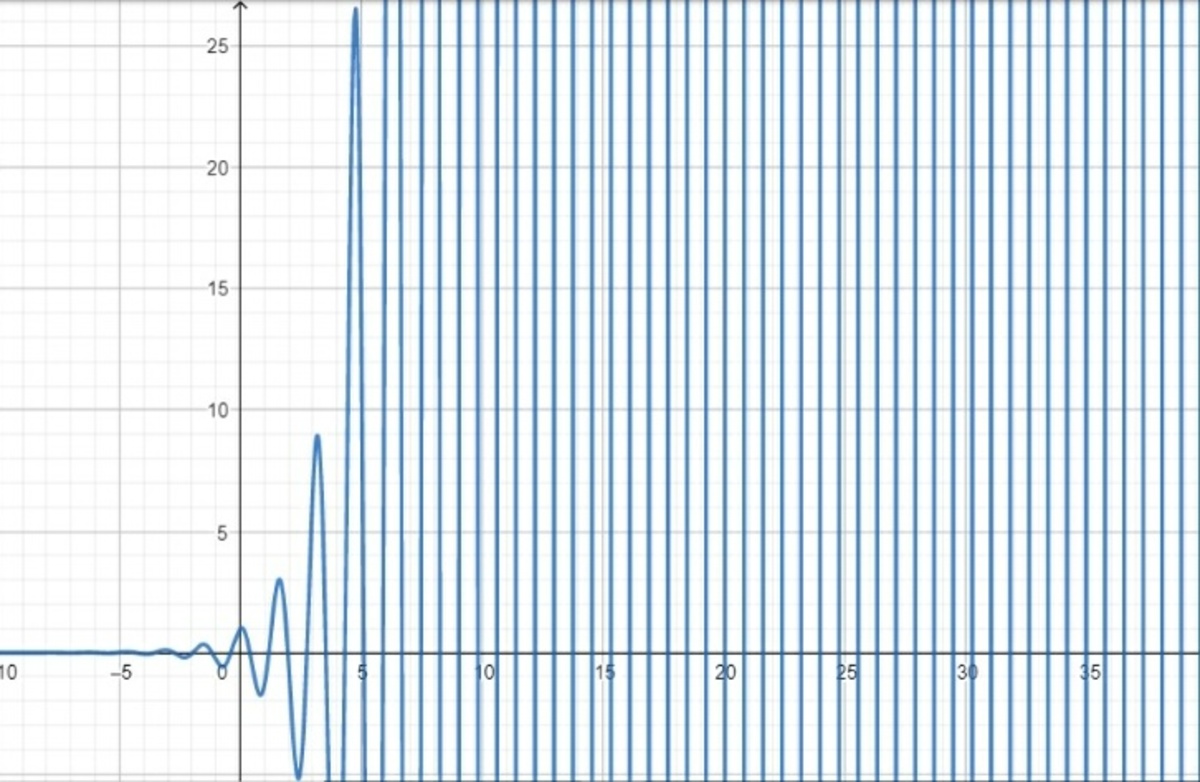This section requires Javascript.
You are seeing this because something didn't load right. We suggest you, (a) try
refreshing the page, (b) enabling javascript if it is disabled on your browser and,
finally, (c)
loading the
non-javascript version of this page
. We're sorry about the hassle.
Assume that the function has a limit c when x approaches infinity. Then, x → ∞ lim 2 x cos ( 4 x ) = c By the definition of limit, there exists an interval ( ϵ , ∞ ) such that, for all values of x ∈ ( ϵ , ∞ ) , the function 2 x cos ( 4 x ) approaches (is close to) c . But no matter how large ϵ might be, for some sufficiently large n , the interval contains a = 4 ( 2 n + 2 1 ) π b = 4 2 n π Since 2 a cos ( 4 a ) = 0 and 2 b cos ( 4 b ) = 2 b , this is a contradiction. Therefore, the limit does not exist.
Note: The function shows oscillatory behavior and does not approach a fixed value. The graph below is a clear illustration of this claim.